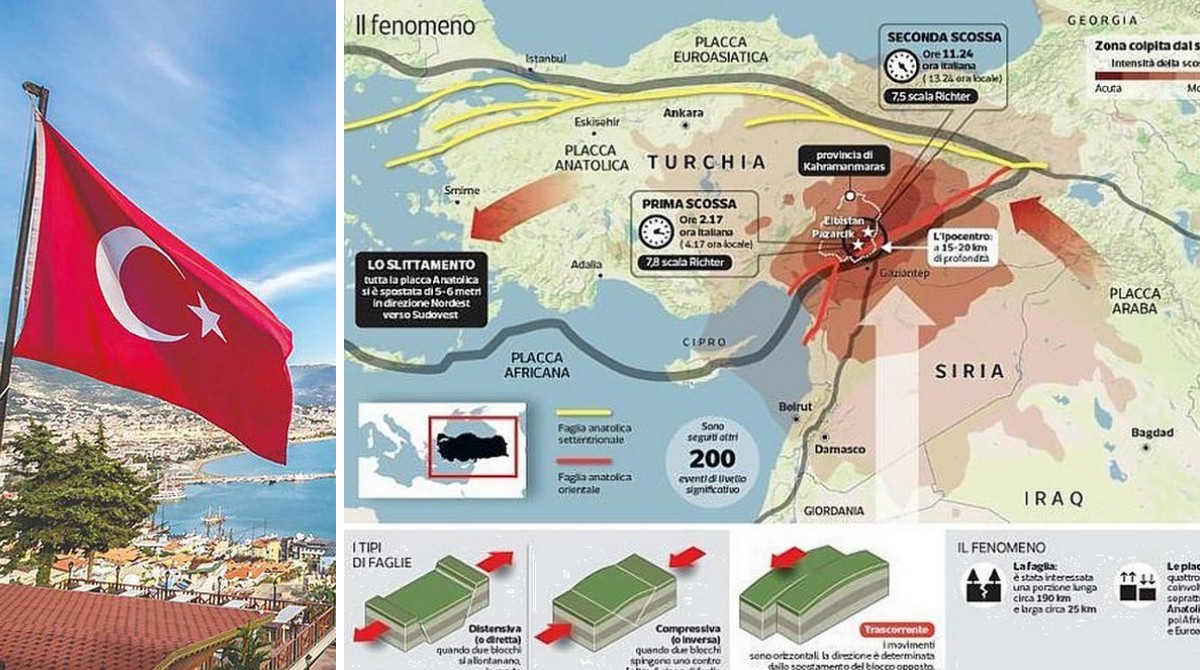The catastrophic earthquake in Turkey occurred in the region’s most seismologically dangerous region — at the point of collision of four plates — Anatolian, Arabian, Eurasian, and African. And according to experts, the earthquake “moved” all of Turkey by as much as 3 meters, and to the southwest. This was stated by the Italian geologist Carlo Donioli. For aviation speeds, such an increase in the road is, of course, noticeable. Much more important is that, according to the professor, it is more accurate to call such a situation a “mega earthquake”, and no one knows what its consequences will be.
It will be recalled that Italy, which “lives on a volcano” in the literal sense – it is on its territory where the most glorious and active European volcanoes Vesuvius and Etna are located – reacted extremely quickly to the earthquake in Turkey. In particular, the tsunami warning, which was later removed. Local seismologists also began actively commenting on the Turkish earthquake. So far, the conclusion of the geologist professor is as follows: the Anatolian plate has moved approximately three meters in the southwest direction about the Arabian plate. Taking into account the fact that the usual geological movement of the area does not exceed 2-3 millimeters per year, and strong earthquakes caused a movement of about 30 cm, the current situation – with an estimated displacement of Turkey by three meters due to the activation of a fault length of at least 150 km – can be called a mega earthquake. And the consequences of this, said Mr. Donioli, can be very long and tragic. Even for tourism.
We will remind you, on Monday two earthquakes occurred in the south of Turkey and in the north of Syria, and with a very significant force, reaching magnitudes of 7.8 and 7.5 on the Richter scale. Carlo Doglioni, president of Italy’s National Institute of Geophysics and Volcanology, said the two earthquakes were part of a single seismic sequence. Horizontal sliding of the Anatolian plate to the southwest in relation to the Arabian plate took place. “This gave rise to a type of fault that seismologists call “shallow transcurrent” with a hypocenter, that is, a deep place of origin, at a depth of 15 to 20 kilometers,” the professor said. As a result of the movement, an area 190 kilometers long and 25 kilometers wide was involved. The two main shocks are only the strongest peaks, the earth continues to shake and collapse, seismologists have already counted about 200 small shocks in the first hours alone.
But the main reason for anxiety is something else. The situation may come to the manifestation of a kind of protracted “seismic epidemic”, the professor said. In this case, the turbulent seismic situation in Turkey could last for days or months, if not years, as has happened in some cases in the past. “It is impossible to predict, but until the stored energy is released, the phenomenon will not stop,” added Mr. Donioli. He also explained to readers that the energy released was about 500 times higher than the 2016 Amatrice earthquake and 30 times higher than the 1980 Irpinia earthquake.

